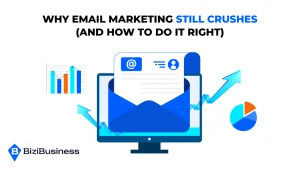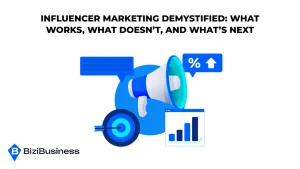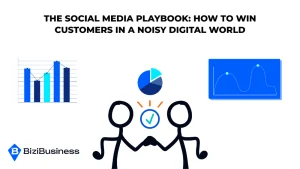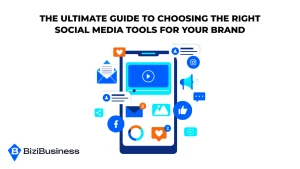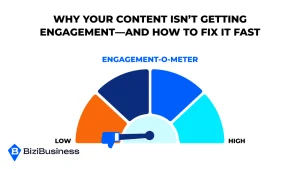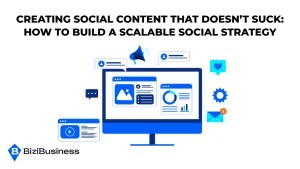BiziTopics
Why Most E-Commerce Emails Fail—And What Top Brands Do Instead
BiziBusiness
Jul 8, 2025
16 min read
You’ve built the store. You’ve got products people want. And you’re sending emails like everyone says you should…
But no one’s clicking.
No one’s buying.
And your list? It’s shrinking faster than your patience.
Let’s get one thing straight:
Email marketing is not dead.
In fact, it’s still one of the highest ROI channels in e-commerce—returning an average of $36 for every $1 spent.
So why are your results so… flat?
Because most e-commerce brands are doing it wrong.
They’re relying on outdated tactics, flooding inboxes with cookie-cutter campaigns, and completely missing what modern customers actually want.
This guide is your wake-up call.
We’re breaking down why most e-commerce emails fail—and exactly what top-performing brands do instead to drive revenue, build loyalty, and turn casual browsers into lifelong customers.
By the end of this article, you’ll know how to transform your email game from ignored to irresistible.
Let’s start with the uncomfortable truth…
The Harsh Truth: Most E-Commerce Emails Are Invisible
Let’s not sugarcoat it—most e-commerce emails are dead on arrival.
They land in the inbox with a whisper, not a bang. Open rates hover around 15-20% on average. Click-through rates? Even worse—often below 2%. And if you’re seeing a spike in unsubscribes after every send… that’s not “email fatigue”—that’s your audience voting with their attention.
Here’s the truth:
Just sending emails isn’t a strategy.
You can’t just hit “Send” and hope for sales. The days of weekly blasts with generic promotions are over. Today’s consumers are overwhelmed, over-targeted, and way more selective about what they click.
And that old “spray-and-pray” approach?
It’s not just outdated—it’s damaging your brand.
You’re not nurturing trust—you’re burning it. Every irrelevant email chips away at your credibility. Every missed opportunity to personalize is a lost sale.
Top brands know this. That’s why they don’t just send emails—they strategically engineer inbox experiences that feel personal, timely, and valuable.
So, if you’re wondering why your emails aren’t delivering results—it’s not email that’s broken.
It’s how you’re using it.
The Real Problem Isn’t the Tool—It’s the Strategy
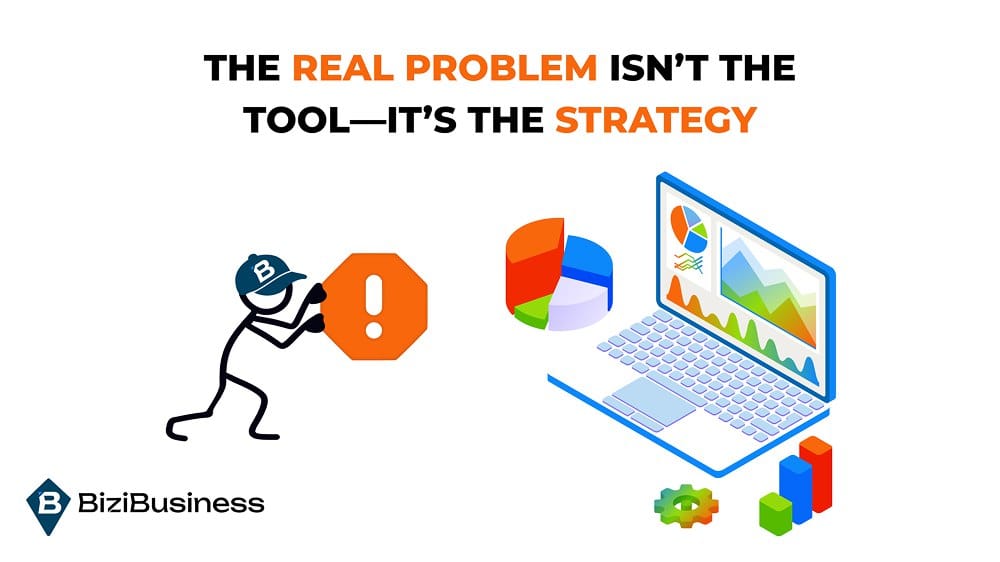
It’s easy to blame your email software when results tank.
Maybe you’ve switched platforms. Maybe you’ve upgraded to the “pro” plan. Maybe you’ve sunk hours into templates that look good but still get ghosted.
But here’s the truth most won’t tell you:
Your platform isn’t the problem—your approach is.
Because even the most powerful email tool in the world can’t save a broken strategy.
Let’s break down the biggest pitfalls:
Generic Messaging That Could Be Sent to Anyone
“Hey [First Name], here’s 10% off!”
Cool. So did a hundred other brands today. If your emails aren’t speaking to specific people with specific needs, they’re just noise.
Bad Timing and Worse Relevance
Are you sending emails just to check a box on your marketing calendar?
Without understanding where the customer is in their journey, you’re either annoying them or missing them entirely.
Over-Designed, Under-Performing Emails
A pretty email that doesn’t convert is just digital wallpaper.
Top brands prioritize clarity, not clutter. They write emails that get read—not just admired.
Thinking the Tool Will “Do It All”
Automations and flows are powerful—but they still need strategy.
Without the right content, triggers, and timing, your “set it and forget it” campaigns will be forgotten by your audience in seconds.
Here’s the reality:
A good strategy makes even basic tools powerful.
But a bad strategy? It makes even the fanciest software completely useless.
The top brands aren’t using magic tools—they’re using smart strategies. And in the next section, we’ll show you exactly what that looks like.
How Top E-Commerce Brands Win the Inbox Battle

Most brands treat email as a megaphone.
Top brands treat it like a conversation.
They don’t blast. They build.
They don’t just automate. They intentionally map every touchpoint—creating a seamless journey from inbox to checkout.
So, what are they doing differently?
They Build Strategic Email Flows—That Actually Make Money
It’s not about one promo here and there. The pros create email ecosystems that anticipate, nurture, and convert at every stage of the customer journey.
Let’s break down the essential money-making flows:
- Welcome Series
- Opens with a brand story or mission (not just a discount)
- Builds trust and introduces bestsellers
- Converts new subscribers into first-time buyers
- Why it works: Customers are most engaged right after subscribing. Top brands strike while interest is hot.
- Abandoned Cart Series
- First reminder = helpful (“You left something behind”)
- Second = adds social proof or UGC
- Final = scarcity, discount, or urgency
- Why it works: These emails recover 20-30% of lost sales when done well.
- Post-Purchase Nurture
- Thank-you message with delivery expectations
- Product care tips, how-to guides, or cross-sells
- Invitation to join community or refer a friend
- Why it works: Builds loyalty and turns a one-time buyer into a repeat customer.
- Win-Back Campaigns
- Sent to inactive subscribers or lapsed customers
- Includes re-engagement offers, feedback requests, or exciting new arrivals
- Why it works: You already paid to acquire them—this is your second shot.
Top brands don’t treat email like a one-off channel.
They engineer experiences that nurture and sell on autopilot.
They Segment Like Pros
A “mass email” is a lazy email.
The best brands know segmentation is the secret sauce. That means splitting your audience based on behavior, history, or interests—then tailoring your message accordingly.
Smart segmentation might look like:
- VIP customers (high spenders)
- New subscribers
- Repeat buyers vs. one-time buyers
- Cart abandoners vs. product page browsers
- Discount-only buyers
With segmentation, you’re not just selling—you’re speaking directly to someone’s needs, interests, and buying behavior.
And it works. Segmented email campaigns can result in 760% more revenue compared to batch-and-blast.
They Automate Based on Behavior, Not Guesswork
It’s not about sending “Monday at 10am” because some blog said it’s the best time.
Top brands build automations triggered by customer actions:
- Browsed but didn’t buy? → Send a reminder with related products.
- Bought a skincare item? → Follow up with tips, refills, and cross-sells.
- Opened every email but never clicked? → Test new formats or subject lines.
This creates real-time relevance—the kind that feels like magic to your customer.
And the tools? They’re not exclusive.
Klaviyo, Omnisend, Mailchimp—they all support these tactics.
The difference isn’t the tool.
It’s how the pros use it with intention.
Anatomy of a High-Converting E-Commerce Email
You’ve set up the flows. You’ve got the segments.
But if your emails don’t get opened, read, and clicked—none of that matters.
Here’s what separates high-converting emails from the ones that land in the digital trash bin:
1. Subject Lines That Demand Attention
Your subject line is the gatekeeper. It makes or breaks the open.
Top brands use subject lines that:
- Spark curiosity
➤ “You left this behind” - Create urgency
➤ “Only 3 left in stock…” - Speak to emotion
➤ “You deserve a little treat today” - Feel personal
➤ “[Name], you’re going to love this”
Pro tip: Emojis work when relevant. So do questions, cliffhangers, and first-name personalization.
Test relentlessly—this is your first impression.
2. Copy That Feels Human—Not Corporate
Top-performing emails sound like they’re written by a person, for a person.
They:
- Start with a hook
➤ “You almost had it… your cart’s still waiting.” - Use short, punchy lines (easy to skim on mobile)
- Focus on benefits over features
- Create micro-stories and emotional connection
- End with one clear, focused call-to-action
Remember: You’re not writing a brochure. You’re starting a conversation that leads to action.
3. Design That Guides the Click
Your email doesn’t need to win design awards—it needs to convert.
Smart brands keep it:
- Mobile-first (over 60% of emails are opened on phones)
- Clean and simple—not overly cluttered
- Scannable—with bold headlines, bullets, and visual hierarchy
- CTA-forward—buttons that stand out and drive one clear action
Don’t give readers 10 things to do. Give them one—and make it obvious.
4. CTA Placement That Drives Action
Most emails fail because the call-to-action is:
- Buried too deep
- Repeated too much
- Not compelling enough
Winning CTAs:
- Use action-oriented language
➤ “Shop the Collection,” “Claim My Discount,” “Get My Free Sample” - Stand out with color and spacing
- Appear early and at the end for skimmers
One email. One goal. One irresistible CTA.
5. Test, Optimize, Repeat
Top brands don’t just guess. They test everything:
- A/B test subject lines, images, send times, CTA language
- Track what devices your audience uses
- Watch where drop-offs happen in the journey
The best emails are never “done”—they’re data-driven works in progress.
Data-Driven Decisions: Metrics That Actually Matter
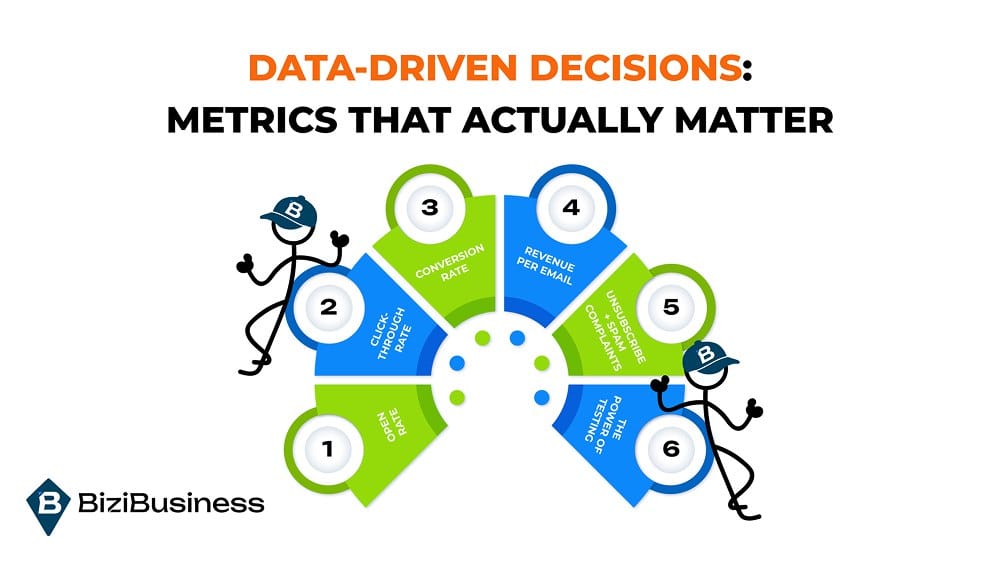
You can’t improve what you don’t measure.
And yet—most e-commerce brands are tracking the wrong things, misreading the signals, and missing out on massive opportunities hiding in plain sight.
Top brands know that the difference between emails that generate clicks—and emails that print money—comes down to obsessing over the right metrics.
Here’s how to shift from guessing to growing with cold, hard data:
1. Open Rate: The Vanity Metric That’s Losing Power
Open rate was once the #1 stat marketers bragged about. But in a post-iOS15 world, it’s… unreliable.
Why? Apple’s Mail Privacy Protection inflates open rates by preloading emails—even if the user doesn’t actually read them.
So what do you do?
- Still monitor it—sudden drops may signal a deliverability issue (like emails landing in spam).
- But don’t obsess over it.
Use open rate to test:
- Subject lines (did your hook work?)
- Preheaders (did you tease the value?)
- Send days/times
2. Click-Through Rate (CTR): The Engagement Truth Teller
CTR shows how many people opened the email and clicked.
This is your engagement litmus test—if they clicked, you caught their interest.
What’s a good CTR?
➡️ 2–5% is industry average. Top performers hit 6–10% depending on the flow.
CTR lets you diagnose:
- Subject line got them in—but did the copy or offer keep them reading?
- Was your CTA clear and irresistible?
- Were images too big (and blocking the message)?
- Is your content skimmable or overwhelming?
3. Conversion Rate: The Money Metric
This is where all roads lead—did they buy?
Conversion Rate = % of people who clicked and completed the goal (usually a purchase).
How to improve it:
- Align your email content with the landing page experience.
- Eliminate friction—optimize your product pages for mobile.
- Test urgency, scarcity, or limited-time offers.
- Add social proof: reviews, UGC, testimonials.
4. Revenue per Email (RPE): The Most Underrated Metric
This tells you how much money each email sends is worth.
It’s the purest measure of ROI—and the one top brands obsess over.
Example:
- Send to 10,000 people
- Generate $5,000 in sales
- Your RPE = $0.50
You can track:
- Revenue per recipient
- Revenue per click
- Revenue per flow (abandoned cart vs. win-back)
Why this matters: If you know your RPE, you can forecast revenue, justify spend, and scale confidently.
5. Unsubscribe + Spam Complaints: The Silent Killers
Ignore these at your peril.
A high unsubscribe or complaint rate means:
- You’re emailing too frequently
- Your content isn’t relevant
- Your list is outdated or cold
- You’re sending to people who didn’t fully opt in
Best Practices:
- Stay below 0.3% unsubscribe
- Keep spam complaints under 0.1%
- Offer a frequency management option (“Email me once a month instead”)
If these numbers spike? Pause. Audit your targeting and content.
6. The Power of Testing: What the Best Brands Never Skip
Top e-commerce brands test everything—because micro-wins stack into major gains.
What you should A/B test regularly:
- Subject lines (urgency vs. curiosity)
- Image-heavy vs. text-based layouts
- Button color, placement, or wording
- Discounts vs. value-based offers
- Social proof position (top, middle, bottom)
- Send time (AM vs. PM, weekdays vs. weekends)
Golden Rule: Test one variable at a time.
Get clear on what’s working and scale it.
TL;DR — Metrics that matter most are:
| Metric | Why It Matters | What to Do with It |
|---|---|---|
| CTR | Shows how engaging your message is | Test copy, CTAs, visuals |
| Conversion Rate | Measures sales impact | Optimize product/landing page |
| RPE | True revenue ROI | Forecast & scale email strategy |
| Unsubscribes | Signals trust breakdown | Fix content, frequency, targeting |
| Spam Complaints | Hurts deliverability | Audit list health + permissions |
Stop Doing This: 7 Common Email Marketing Mistakes
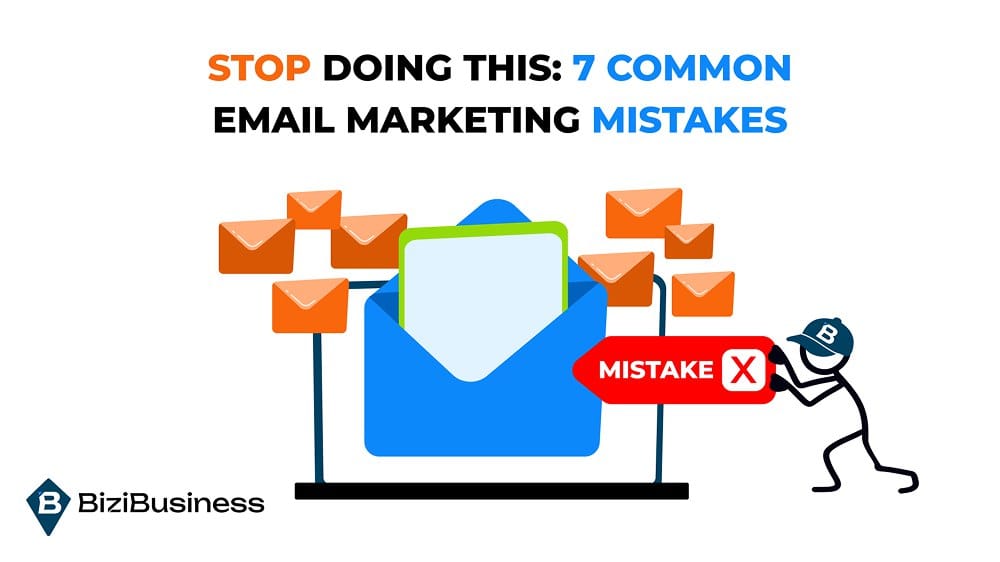
Let’s cut the fluff.
Even the best email tools can’t save you from bad habits. And unfortunately, most e-commerce brands fall into the same traps—over and over again.
If you’re doing any of the following, it’s time to course-correct—fast.
Sending Too Many Emails (or Not Enough)
You ghost your list for weeks… then show up out of nowhere with a sales pitch?
Or worse—you bombard them daily like you’re trying to win the email Olympics?
Both kill trust.
Fix it:
- Find your ideal frequency (often 1–3 emails/week depending on your audience)
- Stick to a consistent schedule
- Balance value and promos (don’t always “ask,” sometimes just give)
Blasting the Same Message to Everyone
One-size-fits-all emails are the fastest way to lose relevance.
If you’re sending the same campaign to a first-time visitor, a VIP, and someone who hasn’t opened in 6 months… you’re not marketing. You’re gambling.
Fix it:
- Segment based on behavior, purchase history, and engagement
- Tailor offers and messaging per group
- Build flows that speak to different stages of the customer journey
Focusing on Design Over Message
Beautiful email. Gorgeous product images. Fancy fonts.
Still no clicks?
That’s because design doesn’t convert—messaging does.
Fix it:
- Lead with a compelling hook and benefits—not just visuals
- Make your copy feel human, not robotic or overly polished
- Don’t bury the CTA beneath a wall of graphics
Ignoring Mobile Optimization
Over 60% of email opens happen on mobile.
So if your text is tiny, your buttons are squished, or your layout is janky…
Congratulations—you just lost the sale.
Fix it:
- Use mobile-friendly templates
- Keep paragraphs short
- CTA buttons should be big enough to tap (and not hidden at the bottom)
Neglecting List Hygiene
Old, unengaged contacts hurt your deliverability.
If you’re sending to people who haven’t opened in a year, you’re dragging down performance and risking spam flags.
Fix it:
- Clean your list quarterly
- Create re-engagement campaigns before purging
- Use double opt-ins to ensure quality from day one
Skipping Post-Purchase Emails
If you’re only emailing before the sale, you’re leaving money on the table.
The post-purchase window is prime real estate for:
- Building loyalty
- Upselling
- Getting reviews
- Encouraging referrals
Fix it:
- Send a thoughtful thank you
- Provide tracking info and how-to guides
- Follow up with related product recommendations
Running Offers with No Urgency or Reason
“10% off everything”… again?
Without urgency or context, discounts lose power.
Fix it:
- Add scarcity: “Only 24 hours left”
- Make it timely: “End-of-season blowout”
- Tie it to customer behavior: “We noticed you looked at this…”
Your Fix-It Framework: The 5 Email Levers to Pull Today
By now, you know why most e-commerce emails fail. But knowledge isn’t enough—you need a system to fix it.
Here’s the framework top brands use to transform inbox invisibility into clicks, conversions, and consistent sales.
You don’t need to do everything at once.
You just need to start pulling the right levers.
1. Audit & Rebuild Your Flows
Look under the hood. Most brands have some automations running—but they’re outdated, broken, or too generic.
✔️ What to do:
- Review your core flows: Welcome, Cart Abandonment, Post-Purchase, Win-Back
- Check for broken links, outdated offers, poor engagement
- Rewrite emails to reflect your brand voice and buyer psychology
- Add missing touchpoints to nurture trust and drive repeat buys
Goal: Ensure every flow is aligned to convert—not just exist.
2. Master Your Messaging
Pretty emails don’t sell—clear, persuasive messaging does.
✔️ What to do:
- Open with a hook (curiosity, emotion, or value)
- Highlight benefits over features
- Use conversational language—ditch the jargon
- Keep it scannable and mobile-friendly
- Include one strong CTA, not five weak ones
Goal: Write like a human, convert like a boss.
3. Segment + Personalize with Purpose
Stop treating your list like one big bucket.
✔️ What to do:
- Segment by behavior: viewed, purchased, engaged, lapsed
- Use dynamic content based on product interest or cart value
- Send VIPs different offers than cold leads
- Personalize beyond “Hi [First Name]”—recommend products, remind them what they browsed
Goal: Send the right message to the right person at the right time.
4. Optimize for Conversions, Not Just Clicks
Clicks are great. Sales are better.
✔️ What to do:
- Improve CTA clarity, visibility, and urgency
- Remove friction on the post-click experience (landing page, checkout, mobile UX)
- Use urgency triggers: countdowns, low stock indicators, exclusive deals
- Add trust boosters: reviews, star ratings, guarantees
Goal: Design every email to drive revenue—not just traffic.
5. Automate Based on Behavior
Don’t just “schedule” emails—respond to what your customers are actually doing.
✔️ What to do:
- Trigger emails based on actions: viewed product, started checkout, bought X, didn’t buy Y
- Set up time-delays that feel natural, not robotic
- Use browsing behavior to tailor product suggestions
- Retarget based on engagement level (cold, warm, hot)
Goal: Let automation work for you, not just instead of you.
You don’t need to reinvent your entire email strategy overnight.
But you do need to stop guessing.
Audit your flows. Write with purpose. Segment with intention. Optimize for real results. Automate with context.
Top brands aren’t lucky—they’re strategic.
And with this framework, you will be too.
Email Isn’t Dead—Your Strategy Is
Let’s kill the myth once and for all:
Email isn’t the problem.
Strategy is.
Too many e-commerce brands are walking away from email because they think it’s “not working”…
But here’s the truth:
- It’s not working because you’re doing what used to work—not what works now.
- It’s not working because you’re treating subscribers like transactions, not people.
- It’s not working because your flows are on autopilot—but nobody’s piloting.
Meanwhile, smart brands are printing revenue from email week after week—without spamming, without chasing hacks, without guessing.
Because they:
✔️ Segment with intent
✔️ Write like humans
✔️ Build flows that nurture AND convert
✔️ Measure what matters
✔️ Constantly test, optimize, and refine
And the best part?
You can do the same—starting now.
You don’t need to send more emails.
You need to send the right ones, to the right people, with the right message, at the right time.
Subscribe to Newsletter
Unlock your creativity and stay up to date on marketing tips
